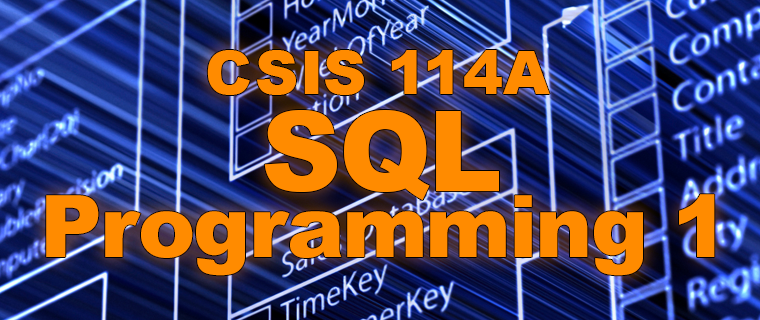Courses
Select a Course:

Course Description
This course introduces the SQL programming language and covers all of the features of the language that are needed to create and maintain single-table database systems. SQL features that will be covered include: language syntax, data query language (DQL) elements, data manipulation language (DML) elements, and basic data definition language (DDL) elements. No prior programming experience required.
By successfully completing this course you will earn 3 units of college credit.
⇑ Table of Contents
Course Objectives
-
Construct an explanation/analysis of the generic systems development life cycle (SDLC) model and SQL’s role in the implementation phase.
-
Evaluate the history of the SQL programming languages and the role of standard bodies in its evolution and development.
-
Evaluate the classification scheme for SQL statements (DQL, DML, DLL, DDL); and evaluate and categorize SQL programs into the ontology.
-
Develop and test SQL statements that use character, numeric, and/or temporal functions.
-
Develop and test SELECT statements that incorporate regular expressions.
-
Develop and test SQL programs that use subqueries.
-
Develop and test a SQL program that incorporates group functions.
-
Develop and test SQL programs that use DML commands (INSERT, UPDATE, DELETE).
-
Construct base schema objects with DDL.
-
Analyze technical information, as well as listen effectively to, communicate orally with, and prepare memos, reports and documentation for a wide range of audiences.
-
Investigate and assess new sources of information and learning opportunities to stay abreast of emerging information and computing technologies.
-
Construct a list of career paths related to the program of study, as well as any qualifications and/or professional certifications that may be associated with those careers.
⇑ Table of Contents
Course Learning Outcomes
-
Construct a SQL program that uses character functions (based on a problem statement).
-
Construct a SQL program that uses numeric functions (based on a problem statement).
-
Construct a SQL program that uses temporal functions (based on a problem statement).
-
Construct a SQL program that uses regular expressions (based on a problem statement).
-
Construct a SQL program that uses INSERT statements to solve a given problem.
-
Construct a SQL program that uses UPDATE statements to solve a given problem.
-
Construct a SQL program that uses DELETE statements to solve a given problem.
⇑ Table of Contents